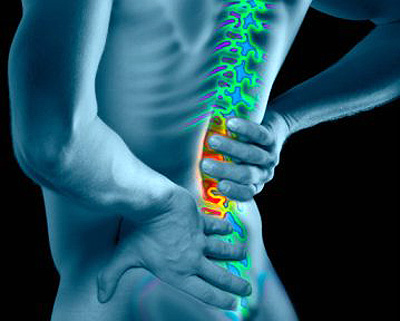Chiropractic for Low Back Pain
Ever since we evolved to stand upright on two legs, the lower back has been an anatomical weak point in humans. Rather than body weight being evenly distributed between both arms and legs, the entire upper torso is supported by the lower back, which rests on the pelvic girdle. Although the lower back muscles generally do a pretty good job, sudden twisting movements of the body can cause muscular strain and damage, leading to pain and incapacitation. Estimated to affect 4 in 5 people over the course of their life, lower back pain (or lumbago) is one of the leading reasons for time off work in the developed world.
The lower back is defined as the area below the rib cage and above the sacrum. Anatomically speaking, this comprises the lumbar vertebrae of the spine, L1-L5, and their associated intervertebral discs, which allow movement and act as shock absorbers. Spinal discs do, however, shrink with age, resulting in movement becoming more restricted and injury more likely.
Ninety-nine percent of lower back pain is caused by minor musculoskeletal injuries such as muscle strain, which usually resolves itself after a few weeks. This is referred to as non-specific lower back pain and responds well to chiropractic therapy such as spinal manipulation and mobilization, treatment with heat and cold, and strength-building exercises. Although a few weeks may seem like a short time for a back injury to heal, it is not an insignificant period to take off from work or home life, and even minor injuries can leave a weakness in the affected area that that makes the pain prone to recurrence.
More serious lower back injuries include herniated (slipped) discs, facet syndrome (back sprain), scoliosis (curvature of the spine) and sciatica. Chiropractors have great expertise and experience in diagnosing and treating all of these injuries and offer a much less extreme form of medical intervention than ongoing medication with painkillers or even surgery, which are routinely offered by conventional doctors.
In addition to the lower back pain itself, symptoms that suggest that you may benefit from chiropractic help include:
• Leg pain, numbness and/or tingling
• Difficulty in standing or sitting for extended periods
• Pain in the hips and/or buttocks
• Stiffness on waking
• Feeling ‘out of balance’
Back problems may become more serious if left untreated and can cause more pain and a greater risk of recurrence. Getting an early professional chiropractic opinion and regular chiropractic treatment may save you from unnecessary pain both now and in the future.
